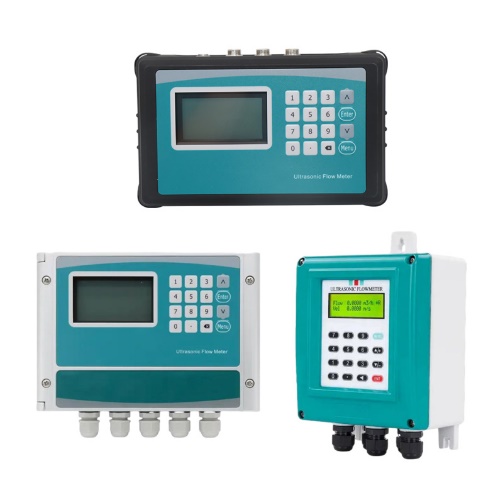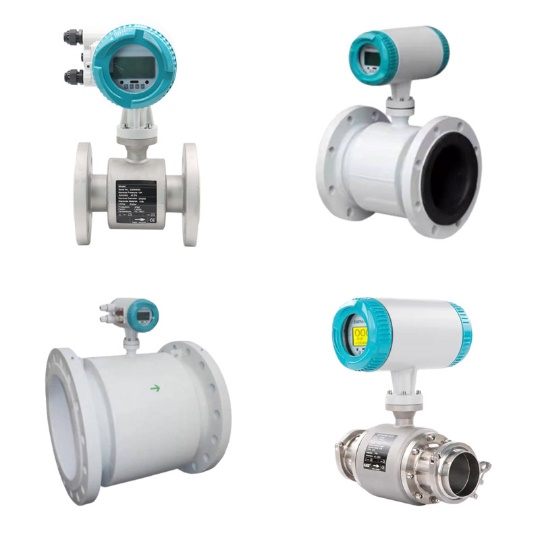what is the difference between ultrasonic and electromagnetic flow meter?
2024-08-31
In the water conservancy, food and chemical industries, ultrasonic flowmeters and electromagnetic flowmeters are widely used to measure liquid flow equipment. However, in the actual application process, we need to combine the application scenario, demand, price to choose the most suitable flowmeter, the following is the comparison of the two flowmeters:
Ultrasonic Flow Meters:
Electromagnetic Flow Meters (Magmeters):
Ultrasonic Flow Meters:
Electromagnetic Flow Meters:
Advantages and Disadvantages
Ultrasonic Flow Meters:
Advantages:
Electromagnetic Flow Meters:
Advantages:
Key Differences Summarized
Choosing the Right Flow Meter
When deciding between an ultrasonic and an electromagnetic flow meter, consider the following factors:
If you want to know more about the flow meter or flow meter selection, please consult the Aister flow meter manufacturer email: sales@aistermeter.com for help.
What is the working principle of ultrasonic flowmeter and electromagnetic flowmeter?
Ultrasonic Flow Meters:
- Transit-Time Method: These meters use ultrasonic sound waves sent through the fluid in both upstream and downstream directions. The flow rate is determined by measuring the difference in transit times of these waves caused by the fluid's movement.
- Doppler Method: These meters rely on the Doppler effect, where the frequency of the reflected ultrasonic waves changes in proportion to the velocity of particles or bubbles within the fluid. This change is used to calculate the flow rate.

Electromagnetic Flow Meters (Magmeters):
- Faraday’s Law of Electromagnetic Induction: These meters measure flow based on the principle that a voltage is induced when a conductive fluid moves through a magnetic field. The induced voltage is proportional to the flow velocity, and this relationship is used to determine the flow rate.

Application scenarios of ultrasonic flowmeter and electromagnetic flowmeter
Ultrasonic Flow Meters:
- 1. Water and sewage: such as drinking water, tap water, industrial water, municipal sewage, industrial wastewater, especially non-conductive wastewater.
- 2. Oils: such as crude oil in petroleum exploitation, gasoline, diesel, kerosene, lubricating oil in mechanical equipment.
- 3. Chemical liquids: such as sulfuric acid, sodium hydroxide, alcohol, benzene, acetone, resin, paint, emulsion, etc.
- 4. Food and beverages: such as fruit juice, milk, beer, soy sauce, vinegar, vegetable oil, syrups or concentrated flavorings in the production process.
- 5. Liquids in the pharmaceutical industry: such as liquid ingredients in the formulation of drugs, organic and inorganic solvents used in the pharmaceutical process.
- 6. Cooling and heating medium: cooling water, hot water
- 7. Pulp: pulp, paper pulp
- 8. Rivers and natural bodies of water: rivers, lakes and reservoirs
- 9. Liquefied Natural Gas (LNG) and Liquefied Petroleum Gas (LPG)
- 10. Seawater
Electromagnetic Flow Meters:
- 1. Water and sewage: tap water, drinking water, municipal sewage, industrial wastewater, treated water measurement.
- 2. Chemical liquids: such as sulfuric acid, hydrochloric acid, sodium hydroxide, sodium chloride solution, potassium nitrate solution, etc.
- 3. Pulp: pulp, paper pulp
- 4. Food and beverage: such as milk, yogurt, orange juice, apple juice, beer brewing, wine fermentation process liquid.
- 5. Pharmaceutical industry: liquid medicines, solvents and mixtures
- 6. Metallurgy and mining: such as electrolyte, pulp.
- 7. Power plant: cooling water, boiler feed water
- 8. Petrochemical industry: electrolytes and organic chemical solvents in electrolytic aluminum production.
- 9. Seawater
- 10. Syrups and other conductive liquids in the food industry: syrups, fermentation fluids
Advantages and Disadvantages
Ultrasonic Flow Meters:
Advantages:
- Non-Intrusive Options Available: Clamp-on ultrasonic meters can be installed without cutting into the pipe, allowing for easy installation and maintenance.
- No Moving Parts: Reduces maintenance requirements and increases durability.
- Versatility: Can measure a wide range of flow rates and pipe sizes.
- Suitable for Both Clean and Dirty Fluids: Depending on the type (transit-time vs. Doppler).
- Accuracy Dependent on Fluid Conditions: Transit-time meters require clean fluids; accuracy can be compromised in the presence of particulates or air bubbles.
- Installation Sensitivity: Proper installation (e.g., straight pipe lengths, absence of vibrations) is crucial for accurate measurements.
- Potential Signal Interference: High levels of noise or temperature variations can affect measurements.
Electromagnetic Flow Meters:
Advantages:
- High Accuracy and Reliability: Consistently accurate for conductive fluids, regardless of flow profile.
- Suitable for Dirty, Corrosive, or Abrasive Fluids: Since there are no moving parts and the measurement is non-intrusive to the fluid.
- No Pressure Drop: The meter does not impede flow, as there are no obstructions.
- Low Maintenance: Minimal moving parts and robust construction.
- Limited to Conductive Fluids: Cannot be used with non-conductive fluids like most oils or hydrocarbons.
- Higher Initial Cost: Generally more expensive upfront compared to some other flow meter types.
- Installation Requirements: Requires full pipe coverage by electrodes and magnetic fields; proper installation is critical to prevent errors.
Key Differences Summarized
| Feature | Ultrasonic Flow Meters | Electromagnetic Flow Meters |
| Measurement Principle | Uses ultrasonic sound waves (transit-time or Doppler) | Based on electromagnetic induction (Faraday’s Law) |
| Fluid Compatibility | Clean fluids (transit-time) or fluids with particulates (Doppler) | Conductive fluids only |
| Installation | Can be clamp-on (non-intrusive) or inline | Typically requires inline installation |
| Accuracy | High for appropriate fluid types and conditions | Generally very high for conductive fluids |
| Maintenance | Low, especially for clamp-on types | Low, no moving parts |
| Cost | Varies; clamp-on types can be cost-effective | Often higher initial investment |
| Common Applications | Water, oil, HVAC, wastewater (depending on type) | Water and wastewater, chemicals, food/bev |
Choosing the Right Flow Meter
When deciding between an ultrasonic and an electromagnetic flow meter, consider the following factors:
- Type of Fluid: Ensure the meter is compatible with the fluid's properties (conductivity, presence of particulates).
- Installation Environment: Consider whether a non-intrusive installation is necessary and the pipe conditions.
- Accuracy Requirements: Both types offer high accuracy, but specific applications may favor one over the other based on environmental factors.
- Budget Constraints: Factor in both initial costs and long-term maintenance considerations.
- Application Specifics: Some industries may have preferences based on common practices or regulatory requirements.
If you want to know more about the flow meter or flow meter selection, please consult the Aister flow meter manufacturer email: sales@aistermeter.com for help.
Share To:
Previous Post:
Next Post:
News
- Why is the thermal gas mass flowmeter not affected by pressure strength and temperature?
- What to do when a thermal gas mass flow meter fails?
- How are thermal gas mass flow meters used? What are the applications?
- Under what circumstances is the gas measurement need to be regulated compensated vortex flowmeter
- Why Is The Aister Thermal Gas Mass Flowmeter So Popular ?
- Gas turbine flowmeter manufacturers explain their main advantages in measurement
- Gas turbine flowmeter manufacturer Aister instrument field experience summary
- Aister Instrument Empowerment Conference








